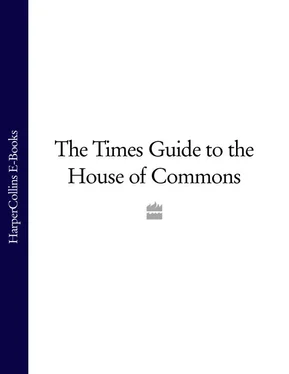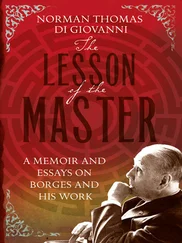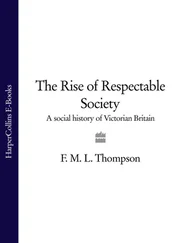There were three waves of reform during the Labour years: when Robin Cook was Leader of the Commons from June 2001 until March 2003; when Jack Straw was Leader from 2006 until 2007; and, finally, in the aftermath of the expenses scandal, when a special committee was set up under the respected Labour MP and political scientist Tony Wright to examine ways of strengthening the influence of the Commons and of backbenchers.
Among the changes have been a strengthening in the role of select committees in 2002 by giving them ten core tasks, including examining annual departmental reports and expenditure plans, aided by the creation of a central Scrutiny Unit to provide expert support in addition to the clerks and advisers to particular committees. But each committee has its own distinctive style, priorities and approach, notably reflecting the personality of the chairman. Additional pay for select committee chairmen was introduced from October 2003, while from 2007 the committees were given the additional role of holding pre-appointment hearings for those chairing a variety of public bodies. This is not, however, a veto power, as was shown when Ed Balls brushed aside the objections of the Childrens, Schools and Families Select Committee to an appointment in his area. In 2009, eight new regional committees were set up, despite the protests from the main opposition parties.
The Prime Minister was, for a long time, above this process, but, since July 2002, he has given evidence for about two and a half hours twice a year to the Liaison Committee, which consists of the chairmen of the main select committees. This enables a wide range of topics to be raised, but at times it can be too wide since neither Tony Blair nor Gordon Brown, in their very different ways, was ever discomfited during an appearance.
After the expenses scandal there was widespread agreement that the Commons not only needed to sort out this specific issue but also to address wider questions about the role of MPs. This led to the formation of the cross-party Select Committee on Reform of the House of Commons, generally known as the Wright committee. This was different from the Modernisation Committee, which had discussed most big changes since 1997 but had become dormant under Harriet Harman’s leadership of the Commons. Whereas the Modernisation Committee had always been chaired by the Leader of the Commons, the Reform committee was chaired by a leading backbencher. Its remit was limited to what were seen as the most pressing problems: appointments to select committees, the arrangement of business in the House and the possibility of direct public initiation of issues in the chamber. The committee’s report, Rebuilding the House, published in November 2009, concentrated on giving backbenchers more control and reducing the role of the party whips in determining the membership of select committees and the non-governmental business of the House.
The reform committee recommended that the chairmen of most select committees should be elected by the House as a whole and other members should be elected within each political party, with the basis of election being decided by each party. The party balance of committees and of the chairmen will continue to reflect the proportion of seats that each party holds in the House. The Speaker will determine what the balance should be between the parties and they will negotiate about which party will provide chairmen for which select committee. Nominations will be sought and candidates will submit manifestos. There may be hustings and elections will then take place.
The intention is that the chairmen and the members should be more independent than in the past, when there had been occasional rows on the floor of the House over attempts by the whips to prevent independent-minded MPs from being re-elected to chair committees. In addition, the size of departmental select committees was limited to 11, in the hope of ensuring greater attendance and higher commitment from MPs.
The most contentious proposal would involve ending the Government’s exclusive hold on the agenda of the Commons. The reform committee proposed that a backbench business committee should be appointed to schedule backbench business and that, in time, a House business committee should be set up to schedule all business before the House. In March 2010, the Commons agreed with these proposals and with the establishment of a House business committee during the course of the following Parliament but the Labour Government and the party whips ensured that no time was available before the dissolution of the House and the election. Even the creation of a backbench business committee would represent a significant shift in the balance of power within Parliament, allowing backbenchers, rather than the party whips, to decide whether to have an increased number of short, topical debates and to give more time for discussion on select committee reports.
The Commons scrutiny of legislation has commonly been regarded as one of the least satisfactory aspects of Parliament. The formal procedures are unchanging. A Bill is introduced without discussion, its first reading, then about ten days later it is debated in principle on the floor of the Commons in its second reading. Most Bills then go “upstairs” to be scrutinised line-by-line in what used to be called standing committees and are now known as public Bill committees. (Exceptions are constitutional Bills, the committee stages of which are always taken on the floor of the Commons, and the most controversial parts of the Finance Bill, which are again taken on the floor.)
This is the most criticised part of the process because government backbenchers are whipped to toe the line and constructive debate has been discouraged. Until a few years ago, the committee stages were allowed to run for a certain number of hours (often about 80) before the Ggovernment put down a guillotine motion limiting the time for further debate. This often left large parts of the Bill undebated before it got to the Lords. After a committee stage, a Bill returns to the floor of the Commons for a report stage, when further amendments can be made. This is often the stage at which controversial changes are debated. There is then a, usually short, third reading before the Bill goes to the Lords, where it follows similar procedures.
The main differences in the Lords are that there are seldom votes or divisions on the committee stages of Bills, which are increasingly taken in the Moses Room or a similar committee room. So the Lords allows votes on amendments on the third reading of Bills as well as at report stage. Each year some Bills are introduced in the Lords rather than the Commons to even out the workload between the two Houses. Money Bills, such as the Finance Bill, cannot be changed in the Lords and receive only a formal debate before being passed.
There have been a number of changes in these procedures. First, more Bills are being published in draft form, which allows time for examination either by a select committee or by a special committee (often a joint one of both Houses). These inquiries can lead to changes to Bills before they are formally introduced and it becomes a matter of the government’s authority. The practice has been disappointing, however, with a marked decline over the past six years in the number of Bills published in draft form.
Secondly, the need for post-legislative scrutiny is now increasingly accepted, with Acts being examined five years after their passage. This is still in its early stages. Thirdly, Bills are now subject to formal timetables from their second reading onwards, with a programme motion stating when a committee stage has to be completed and how long there is for the report and third readings. This has led to complaints that opposition parties and backbenchers have been deprived of their rights to scrutinise, and occasionally, hold up Bills. Fourthly, standing committees were replaced in 2003 by public Bill committees, which permit brief scrutiny sessions when expert witnesses can give evidence immediately before the line-by-line examination of any measure. While, in theory, this offers scope for improving the scrutiny of Bills, the time allowed is often too short and the process needs to be reviewed.
Читать дальше












